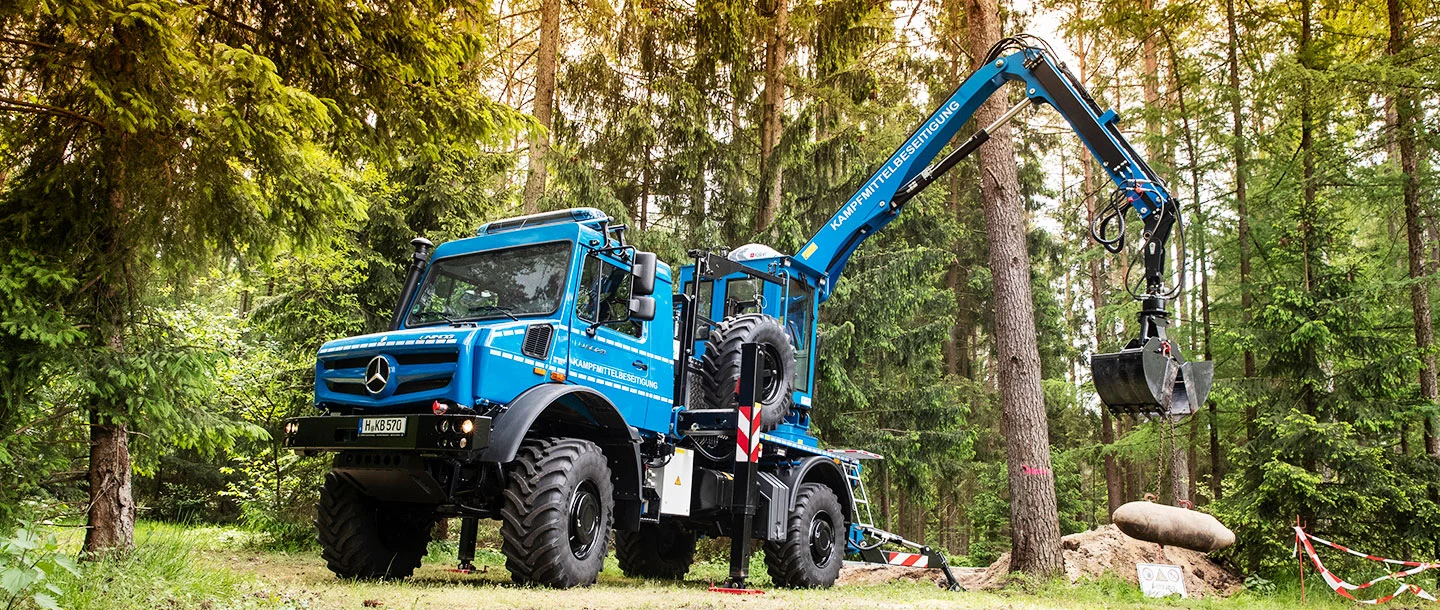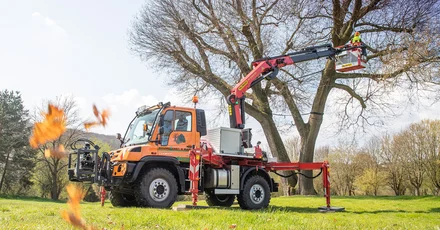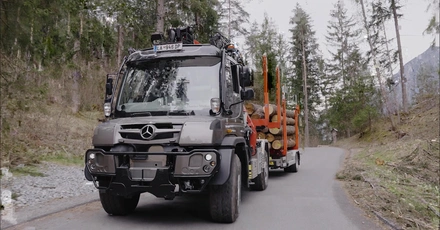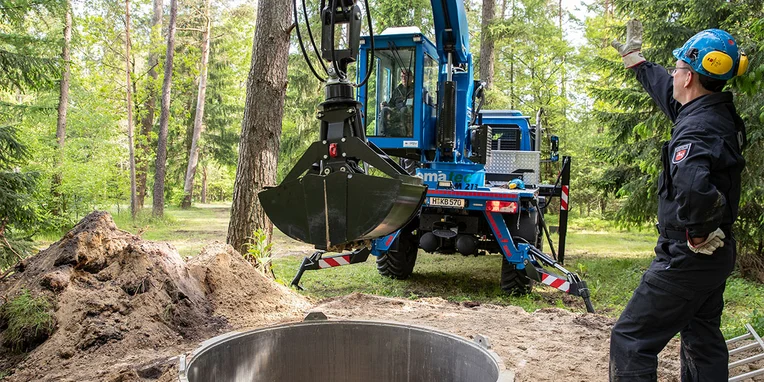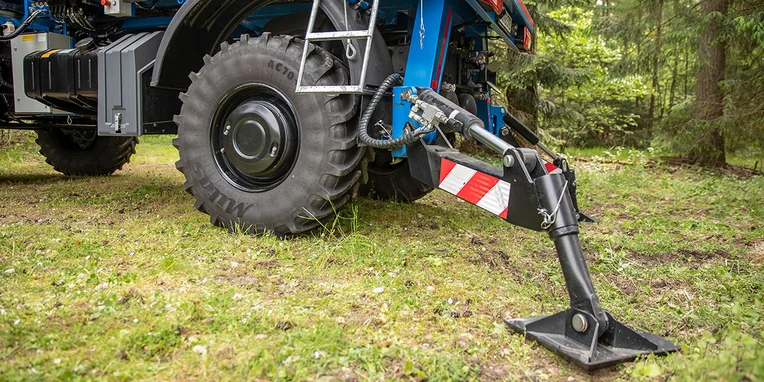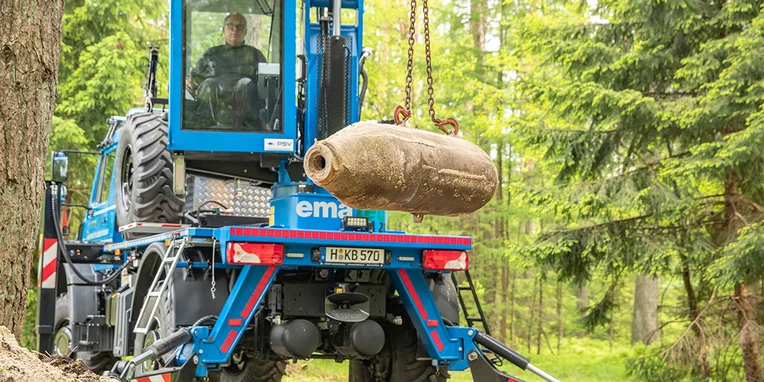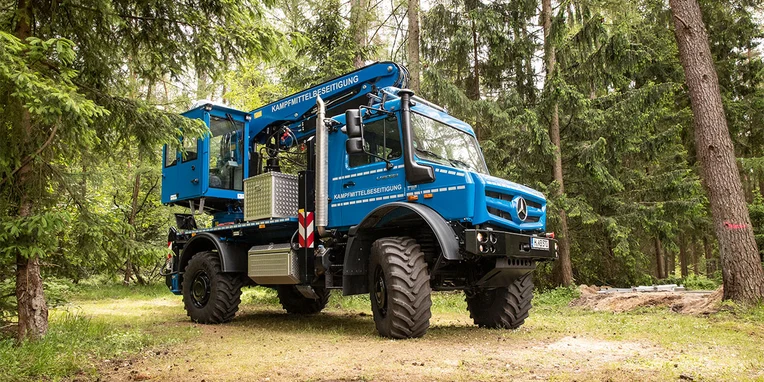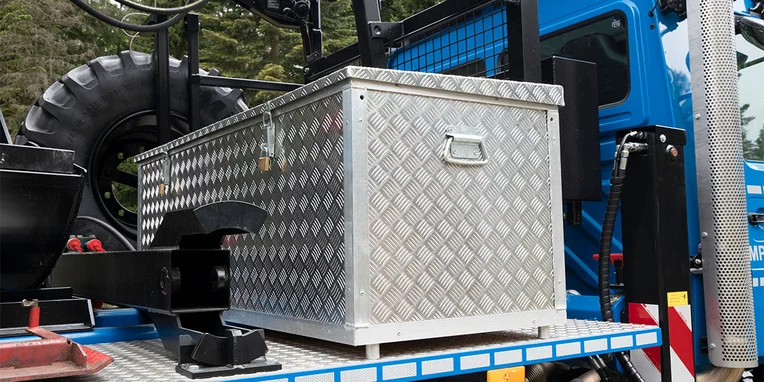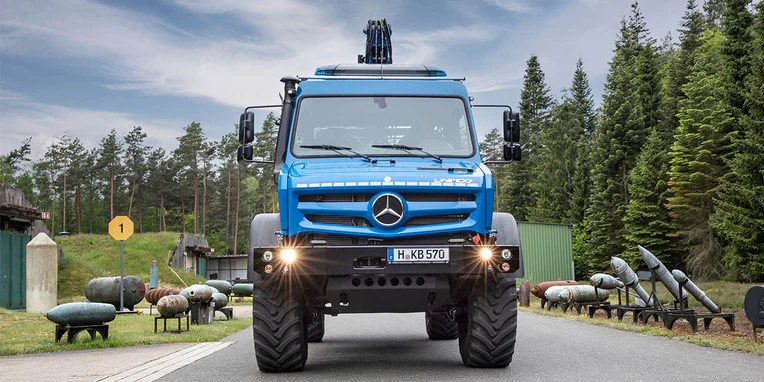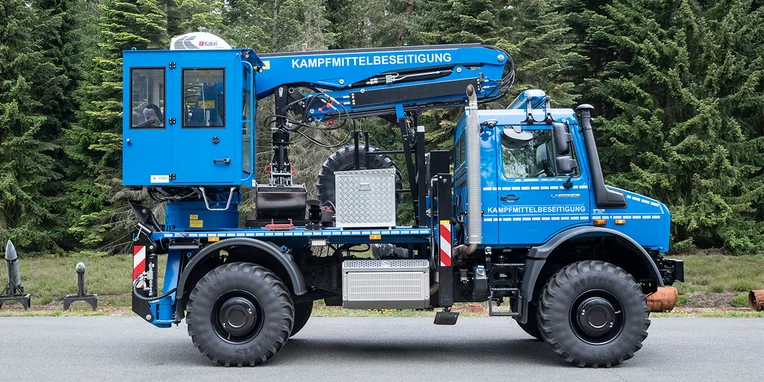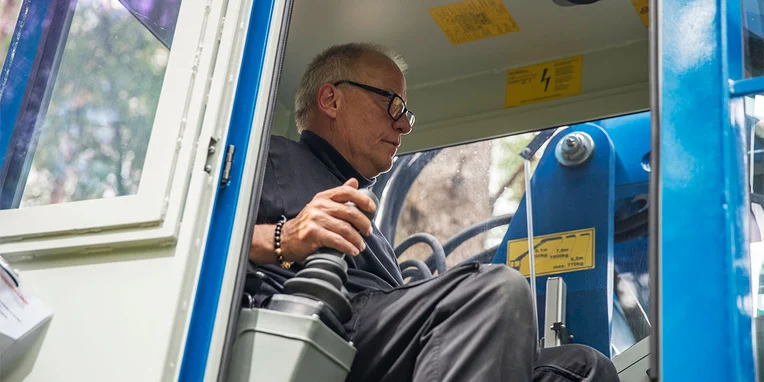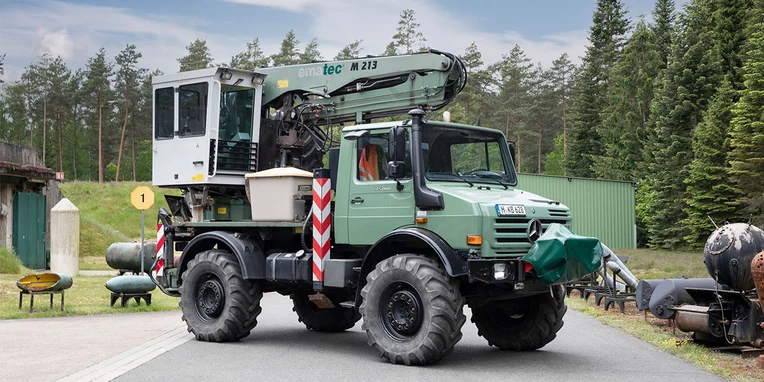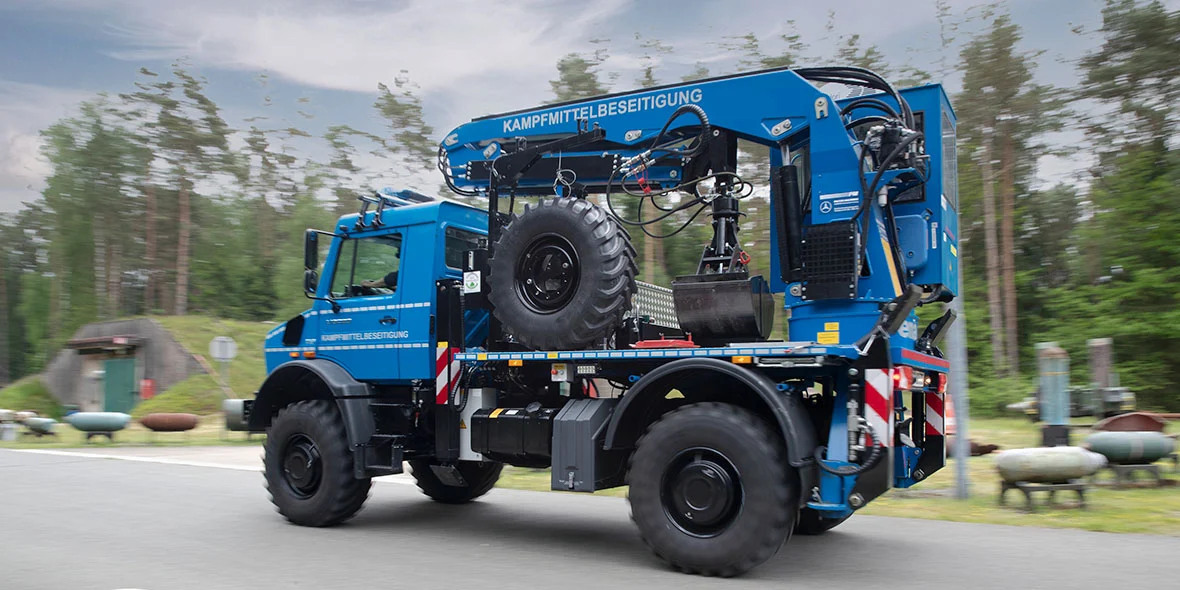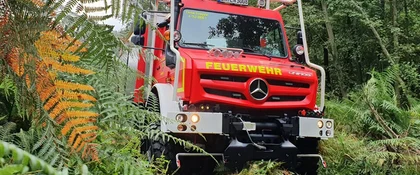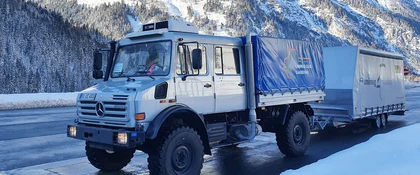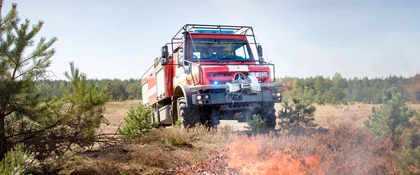The Lower Saxony explosive ordnance disposal service is called out at least three times a day
It's a very special specimen with a flashing blue light and siren – the all-terrain Unimog U 5023 with a "special signalling system" on the cab, as the experts refer to it. The vehicle has recently entered service with the Lower Saxony explosive ordnance disposal service and is making a major contribution towards saving lives.
Ammunition from two world wars.
The Unimog serves the 25 men who are on standby around the clock, ready to remove explosive ordnance remnants from both World Wars. The U 5023 is the third Unimog in succession used by the Lower Saxony explosive ordnance disposal personnel to take bombs, grenades, mines and small ammunitions out of the ground. It is equipped with an Ematec (M213) excavator that can dig down to a depth of six metres.
A video camera provides reliable assistance to the excavator's operator while working underneath the surface of the earth. It is often a matter of millimetres. The cab of the excavator is additionally secured with steel reinforcements, a special armoured glass pane and side shatter protection film. The tyre pressure control system enables the Unimog to forge ahead, even on marshy ground. For the munitions from the past are still lying all over the place in this region: in fields, in bogs, in bodies of water and the coast.
